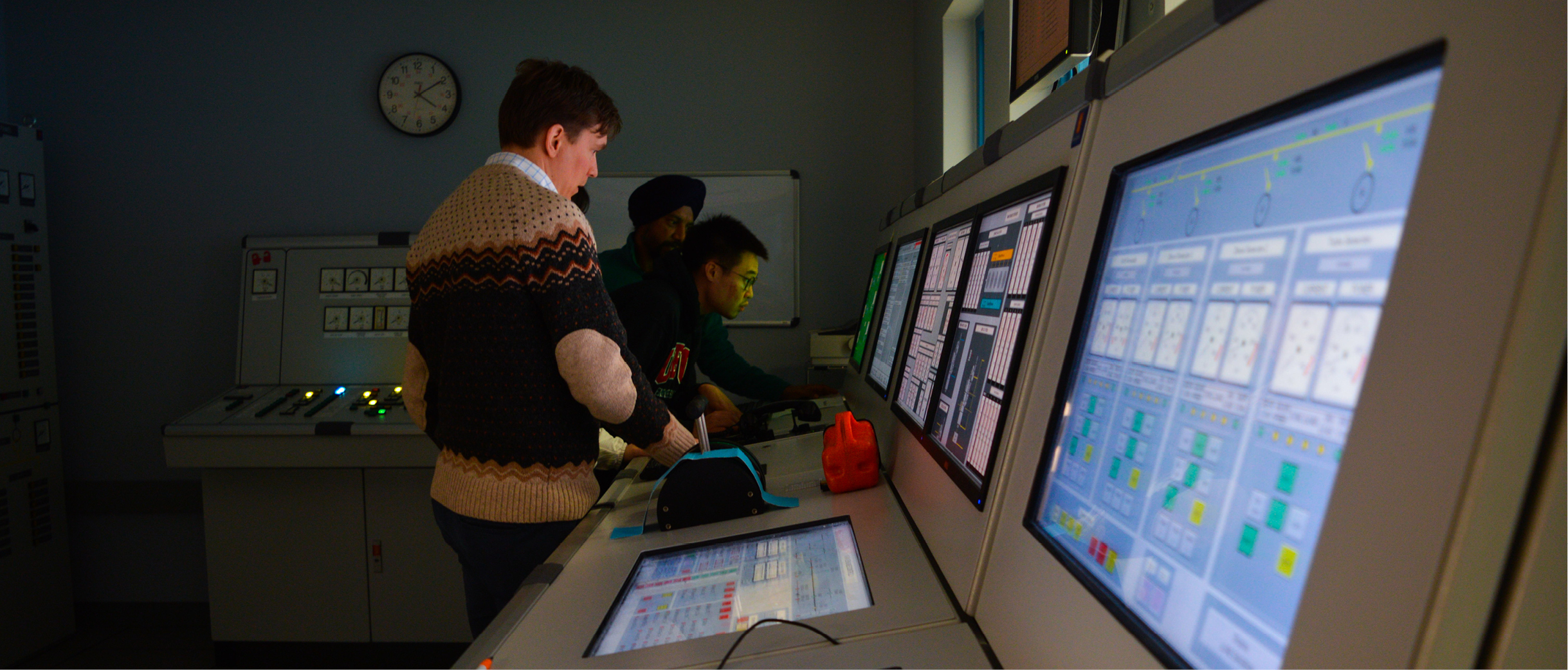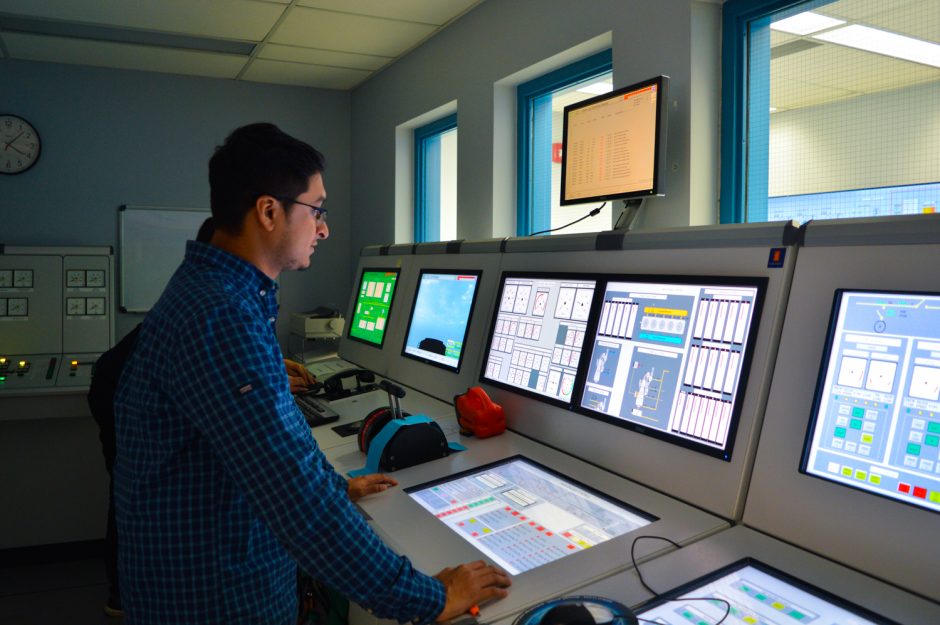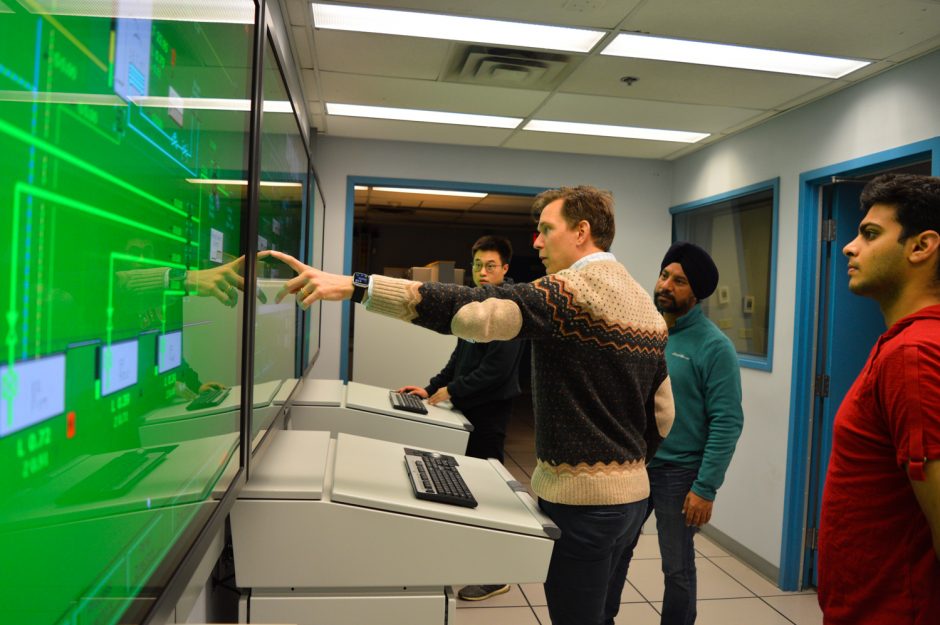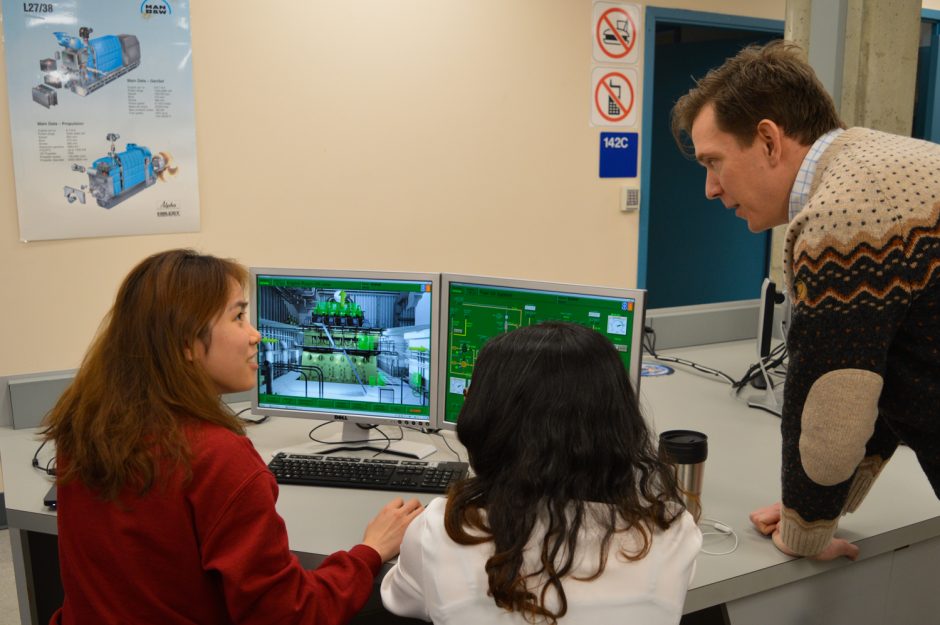
The room is dark except for a few colorful buttons on the instrument panels and the glow coming from the simulator screens. Naval Architecture and Marine Engineering (NAME) students have to figure out how to power up their “ship” before they can use the overhead lighting, in one of the challenges offered by the BCIT engine room simulator.
Visiting Lecturer, Dr. Fredrik Ahlgren from Sweden’s Linnaeus University, has brought his MECH 550N class to the North Vancouver BCIT Marine Campus, a specialized facility created specifically for technical training in the marine industry. The engine room simulator there is an immersive learning tool, allowing students to see how the systems interact on a large complex vessel. Seawater, diesel generators, ship power, the engine, pumps, and other integral systems are all linked and can affect each other and the performance of the ship if not used correctly.
The simulator allows students to explore these systems by letting them run a variety of assignments. The first task is to start the ship from “cold” – all power is off and the ship is totally shut down. Students must start each system up in a specific way to ensure the whole ship can work – in order to get light in the simulator room they can’t just hit a light switch, they have to generate the electricity first.
In real life, a marine engineer has to know these systems inside out in order to solve any problems that arise. If something goes wrong in the middle of the open ocean, they need to know what redundancies exist and how to use them – the engine room simulator was designed so they can practice safely on shore. Dr. Ahlgren’s course is not about teaching NAME students to operate the ship, but to allow them to get to know the complexity of system interaction, knowledge that is key for ship design.


